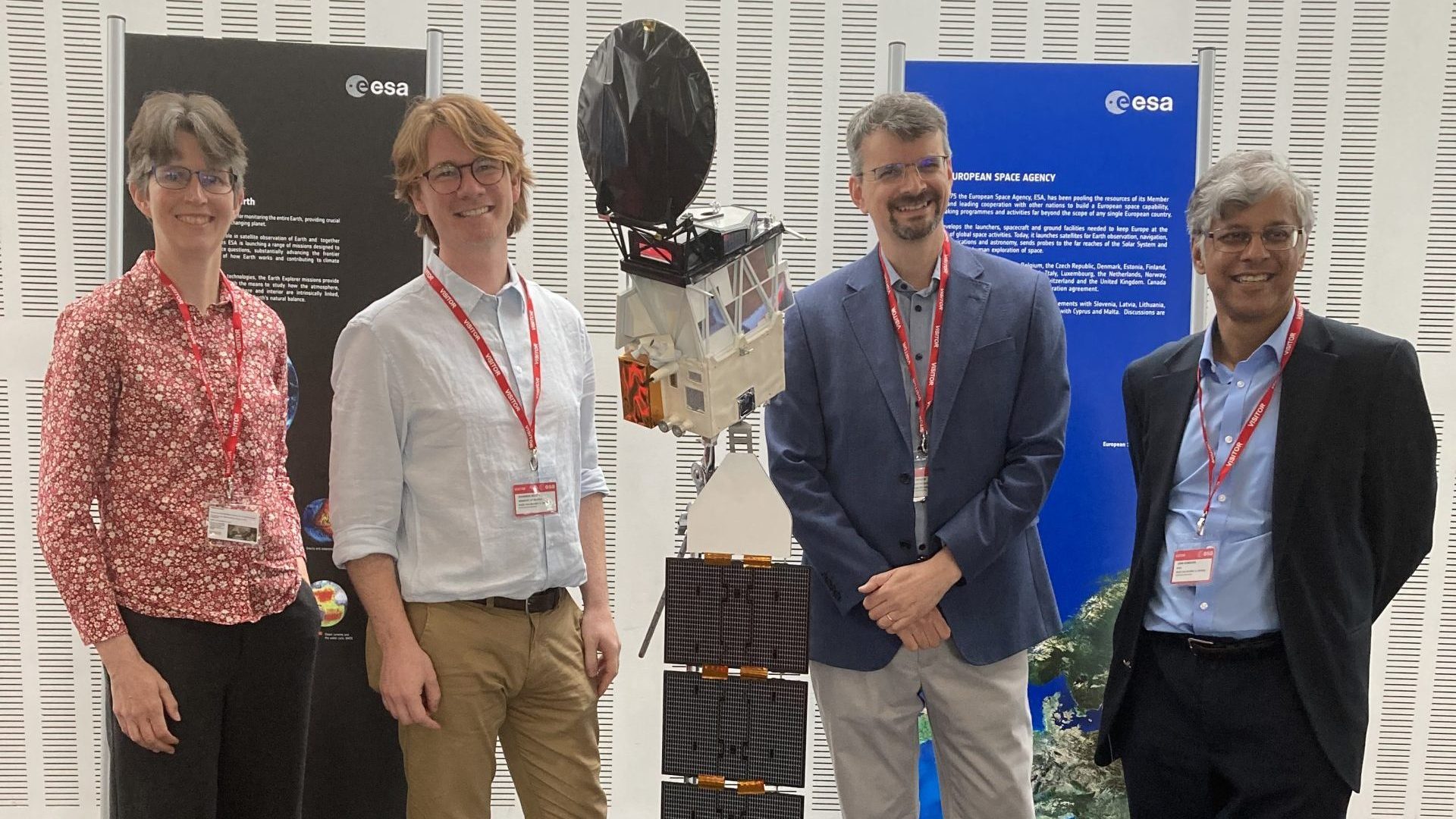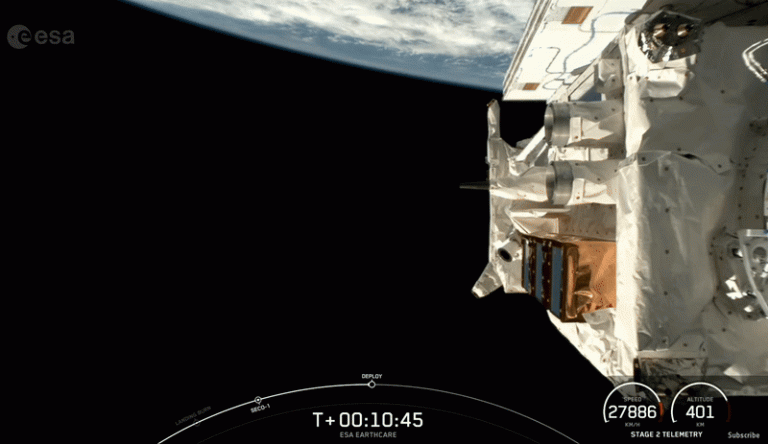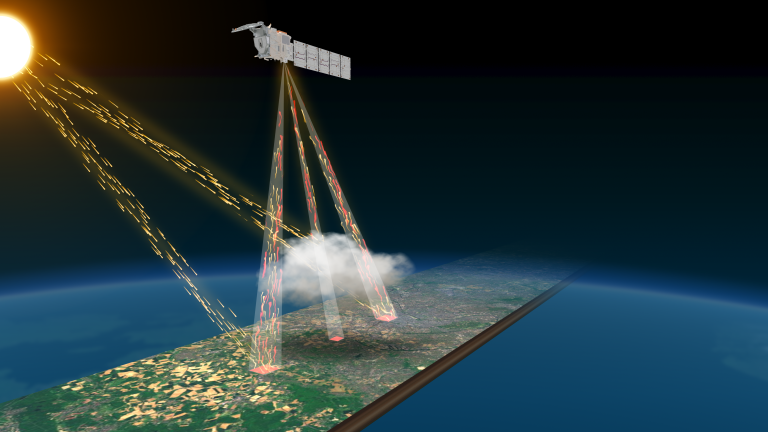
News and Media

NCEO scientists driving science behind latest climate satellite mission EarthCARE

Today we celebrate the successful launch of EarthCARE (Earth Clouds, Aerosol and Radiation Explorer), a joint mission between ESA (the European Space Agency) and JAXA (the Japan Aerospace Exploration Agency). The latest ESA Earth Explorer mission was launched last night from Vandenburg, California. The UK is a major partner in ESA supporting 15 years of world-leading research through NCEO (the National Centre for Earth Observation) at the Universities of Leicester, Reading, Oxford, and Imperial College
EarthCARE will revolutionise our understanding of how clouds and aerosol particles affect weather and climate, helping to resolve disagreements between projections of future climate. How clouds respond to temperature changes caused by different levels of greenhouse gas emissions contributes the largest uncertainty to the magnitude of future predicted warming. Atmospheric aerosols are suspended particles, such as smoke and dust, that are the seeds from which clouds grow. When traffic or industry release aerosols, they can alter the brightness of clouds and likelihood that they rain. EarthCARE’s instruments are designed to unpick the mechanisms that cause these changes.

We also anticipate that EarthCARE will improve the accuracy of our weather forecasts, leading to future EarthCARE instrumentation flying as part of the operational instruments whose observations are used routinely to underpin forecasts.
First proposed in 1993, this €800 million satellite is the most complex Earth Explorer mission to date. 23 UK organisations have been involved in the design and development of the satellite over the last 30 years. The satellite brings together four types of measurements on a single platform for the first time. The Cloud Profiling Radar (CPR) reflects radio waves off droplets within cloud to determine their location and fall speed. The Atmospheric Lidar (ATLID) does similarly for aerosols using an ultraviolet laser. The Multi-Spectral Imager (MSI) photographs the area around the radar beam while the Broad-Band Radiometer (BBR) measures the total energy leaving the Earth. The combination of all four instruments will allow us to see exactly how cloud and aerosols influence energetic exchanges between the Sun, Earth and space. These exchanges are what fundamentally drive our weather and climate.
NCEO scientists at the University of Leicester and University of Reading have played a key role in developing methods to estimate the physical properties of clouds, rain, and snow from radar data. A collaboration between Professor Alessandro Battaglia at the University of Leicester (UoL) and Professor Robin Hogan at the University of Reading (UoR) led to the development of a more realistic radar simulator.
Working with colleagues across the world, University of Leicester NCEO staff have developed a more realistic way of calculating the in-cloud signals seen by the radar and devised new mathematical algorithms which provide vertical profiles of the profile fall speed. For the first time, scientists will be able to observe from space the speed at which particles fall through cloud decks and precipitate to the surface. This is fundamental to whether we experience rain or hail or snow and its intensity.
More recently, Dr. Kamil Mroz at the University of Leicester has developed a world-leading method to add knowledge of the total water in the cloud particles and their characteristic size to the fall speed. Understanding this process is crucial for comprehending the lifecycle of clouds, including how rain forms, intensifies, and dissipates during storms. Dr Shannon Mason, NCEO at the University of Reading and ECMWF has developed an algorithm that combines measurements from all four instruments to estimate properties of clouds, aerosols and precipitation.
‘EarthCARE is a truly exciting, innovative mission which promises to give us urgently needed, detailed information about the interactions between clouds and aerosols and how these modify the Earth’s outgoing energy, weather and climate. It has been a long time coming but it will be well worth it.’
Professor Helen Brindley, NCEO Divisional Director at Imperial College London
Led by Thales Alenia Space in the United Kingdom, the Broadband Radiometer (BBR) is one of four instruments on board EarthCARE. It will use three telescopes looking in three directions at once to study the radiance at the top of the atmosphere for better weather prediction. It will look at the relationship between clouds, aerosols and radiation and their combined effects on the Earth’s climate system.The telescope assembly was designed and built by RAL Space, building on over 20 years of experience working on innovative instruments for weather forecasting and climate science, and Thales Alenia Space’s engineers in the UK led the design, construction and testing of the BBR. NCEO scientists at Imperial College London participated in the instrument development, characterising the spatial response of the BBR detectors. They also helped to formulate the methodology which will be used to obtain true broad-band energies from the raw observations.

Latest News and Events





